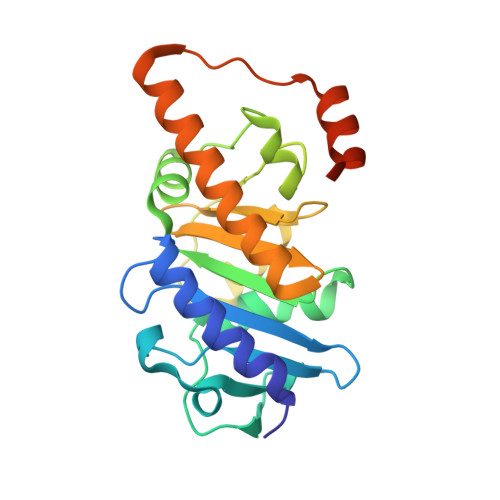Salvage of the 5-deoxyribose byproduct of radical SAM enzymes.
Beaudoin, G.A.W., Li, Q., Folz, J., Fiehn, O., Goodsell, J.L., Angerhofer, A., Bruner, S.D., Hanson, A.D.(2018) Nat Commun 9: 3105-3105
- PubMed: 30082730
- DOI: https://doi.org/10.1038/s41467-018-05589-4
- Primary Citation of Related Structures:
6BTD, 6BTG - PubMed Abstract:
5-Deoxyribose is formed from 5'-deoxyadenosine, a toxic byproduct of radical S-adenosylmethionine (SAM) enzymes. The degradative fate of 5-deoxyribose is unknown. Here, we define a salvage pathway for 5-deoxyribose in bacteria, consisting of phosphorylation, isomerization, and aldol cleavage steps. Analysis of bacterial genomes uncovers widespread, unassigned three-gene clusters specifying a putative kinase, isomerase, and sugar phosphate aldolase. We show that the enzymes encoded by the Bacillus thuringiensis cluster, acting together in vitro, convert 5-deoxyribose successively to 5-deoxyribose 1-phosphate, 5-deoxyribulose 1-phosphate, and dihydroxyacetone phosphate plus acetaldehyde. Deleting the isomerase decreases the 5-deoxyribulose 1-phosphate pool size, and deleting either the isomerase or the aldolase increases susceptibility to 5-deoxyribose. The substrate preference of the aldolase is unique among family members, and the X-ray structure reveals an unusual manganese-dependent enzyme. This work defines a salvage pathway for 5-deoxyribose, a near-universal metabolite.
Organizational Affiliation:
Horticultural Sciences Department, University of Florida, Gainesville, FL, 32611, USA.
















